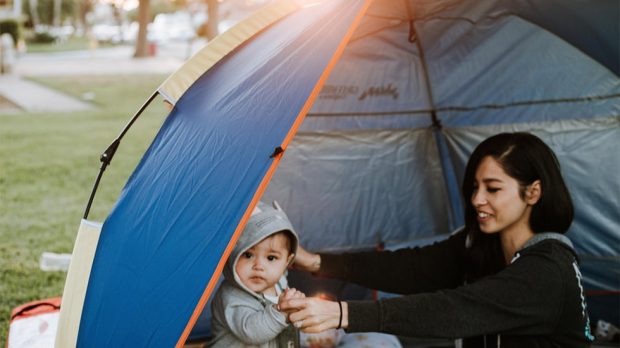
Camping is an enjoyable outdoor experience with family and friends. It is one of the best adventures one can have when you need to relax after a stressful job. Families need the family tent space to offer enough space, so you don’t feel like you’re sleeping on top of one another. The space will likely have separate rooms where kids and parents can have different spaces. It is specially designed to keep luxury and comfort for people inside, and it can serve the purpose best if it can accommodate the entire family members. Fluctuations in the number of people can negatively affect your ability to achieve your goal.
Why make most of your family tent space
The family tent space provides comfort and warmth while hiking but does not handle cold temperatures. However, at temperatures close to zero, they are satisfactory. But to avoid getting into a health-threatening situation, it is better not to take such a tent space with you on winter trips. At this time of the year, there are unique extreme tent spaces to prevent low temperatures.
Make most of your family tent space because of its compactness and portability. Not all types of scarves can have this quality. However, there are also disadvantages. Yes, the tent fold well and is very light, but it also makes sense that it is not very large. The space can usually accommodate a specific number of people.
Even though the family tent space cannot keep you out of extreme temperatures, it can handle wind and rain well. The material from which it is made is quite durable, so if set up correctly, even a strong wind will not frighten visitors. Rain and snow are no problem if you have a family tent space. Most models are waterproof, and the seams are thick enough to keep moisture out.
Factor to consider when looking for the family tent
If you don’t want to lie on top of bags and equipment, wake up every time someone rolls over and pay attention to the size. The best family tent space should be 2-3 m2. Those who plan to sleep on air mattresses or want more space should consider up to 4 m2.
Small children take up less space, but they will grow, and the area will become tighter. Families with this composition are advised to buy a multi-room tent with removable partitions. When children are small, they are removed; when they grow older, they are installed. Some rooms may have their exit. Larger tents often provide shade for the whole family on a hot day.
The best tents are available in the following types: tent, house, hangar, rectangle, hemisphere, and tunnel. Each of them has its advantages. Straight walls distinguish tents-houses and rectangles. As you can see, this design provides more interior space. However, during strong winds, high walls show poor stability. The tent, hangar, hemisphere, and tunnel are less fabric, so they’re lighter. They offer good weather resistance. However, they are not so comfortable inside.
When it is warm outside, the family will appreciate the benefits of a tent with large mesh windows, especially if they are opposite each other. This will ensure airflow through the tent around the clock, helping to keep you cool. For maximum freshness, selected models are equipped with a mesh roof that can be covered with a one-piece rain cover.
Also, pay great attention to the quality of materials. During the first downpour, family members will not want to discover that the seams don’t seal well, so the inside is wet. Reviews will help you determine the quality of the option you are interested in.
Many family tent models include vestibules. These rooms offer to store equipment under protection. They are used to remove dirty clothes before going to bed in wet weather. Pay attention to ease of installation. Some manufacturers recommend three or four people for installation, which may be less than your family has.
The frame quality is directly responsible for the tent’s reliability, so the family tent’s arcs should be made of metal or high-quality fiberglass. Remember that steel frames are not recommended for long trips, as they are heavy and, therefore, transportation problems. It is better to prefer a frame made of aluminum or alloys.
They will not weigh down your luggage, but at the same time, they will provide strength and high reliability of the structure. But if you are interested in a more budget option, pay attention to fiberglass frames. Despite the lower level of reliability, they are several times cheaper than analogs and are characterized by low weight and parameters.
The waterproof feature is an important parameter, mandatory indicated in the technical description for any family tent. The criterion for maximum humidity is defined by the DIN standard, which is stated immediately after the tent’s type and name. The most durable and water-resistant designs include models with an indicator of at least 2000 mm.
You should also know that an indicator of 1000 mm indicates the water-repellent qualities of the tent fabric. Still, anything less is not the best option for outdoor activities, especially in bad weather. Indicators from 2000 mm to 4000 mm are considered optimal.
Conclusion
There are different types of tents, which vary significantly in cost and use. One of the most common ones is the family tents. Compared to others, these tents have the family tent space, with different size. You can make most of your space because it is large and can handle various number of people.